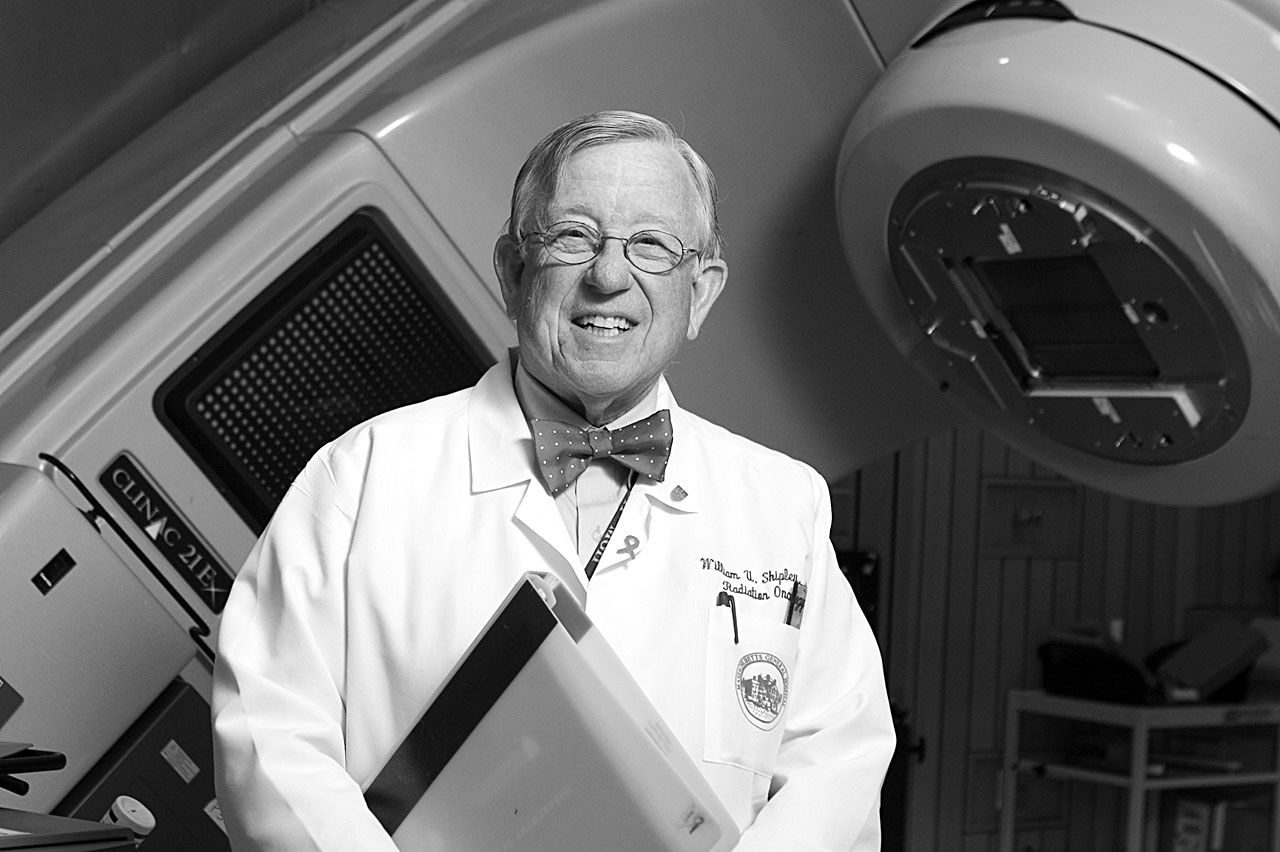Long-Term Study Reports RT Plus Anti-Androgen Improves Prostate Cancer Survival
Patients who had prostate cancer recurrence after radical prostatectomy lived significantly longer with the addition of hormonal therapy to salvage radiotherapy, long-term follow-up from a randomized trial showed.
prostate cancer

William Shipley, MD
Patients who had prostate cancer recurrence after radical prostatectomy lived significantly longer with the addition of hormonal therapy to salvage radiotherapy, long-term follow-up from a randomized trial showed.
Salvage radiation plus 24 months of anti-androgen therapy with bicalutamide led to a 10-year survival of 82% versus 78% for radiotherapy alone. Progression-free survival, metastasis-free survival, and prostate cancer survival all were improved with anti-androgen therapy, as reported at the American Society for Radiation Oncology meeting in San Antonio, TX.
“On the basis of the data, we determined that we would have to treat 17 patients [with bicalutamide] to prevent one prostate cancer death, which in our opinion, makes this treatment quite efficacious,” said William Shipley, MD, professor of radiation oncology at Massachusetts General Hospital in Boston.
“We accomplished this without any change in gastrointestinal or genitourinary toxicity. The toxicity was low in both groups. The only difference was that 70% of men in the anti-androgen group had some low-grade swelling in the breast.”
The findings were consistent with anticipations, he continued, because the combination of radiation therapy and anti-androgen treatment had demonstrated efficacy in other clinical settings.
The findings add level one evidence to inform decision-making for the clinical situation of rising PSA level following radical prostatectomy. Although biochemical relapse occurs in as many as half of patients who have had a prostatectomy, no consensus has emerged about standard of care, despite decades of study.
The Radiation Therapy Oncology Group (RTOG, now NRG Oncology) sought to address the issue of rising PSA after radical prostatectomy in RTOG-9601, a phase III randomized trial. Eligible patients had undergone radical prostatectomy for T2pN0 or T3pN0 prostate cancer and had detectable PSA levels of 0.2 to 0.4 ng/mL.
All patients received radiation therapy of 64.6 Gy in 36 fractions and were randomized to 24 months of daily bicalutamide or matching placebo. The primary endpoint was overall survival.
Shipley reported findings from a median follow-up of 12.6 years. RTOG-9601 involved 761 patients, 671 of whom had achieved a target PSA nadir <0.5 ng/mL following radical prostatectomy. At enrollment in the trial of salvage therapy, 649 patients had PSA values <1.6 ng/mL, and the rest had values of 1.6 to 4.0 ng/mL.
The difference in actuarial 10-year survival translated into a 25% reduction in hazard ratio in favor of the bicalutamide arm (HR, 0.75;P= .036).
Investigators in the trial defined PSA progression as an increase to 0.5 ng/mL or higher in men whose treatment resulted in undetectable PSA levels or an increase of 0.3 ng/mL in men who had detectable PSA levels after treatment. By that definition, the 10-year freedom from PSA progression was 46% in the bicalutamide arm and 30% for the placebo group (P<.001).
The 12-year incidence of metastatic prostate cancer was 14% with bicalutamide and 23% with radiation therapy alone (P<.001). The 12-year incidence of prostate cancer mortality, as determined by central review, was 2.3% among men who received anti-androgen therapy and 7.5% for those who did not (P<.001).
Grade 3/4 toxicity occurred in a similar proportion of patients in each treatment arm. Grade 3/4 toxicity in the bicalutamide and placebo arms consisted primarily of bladder (7.0% vs 6.7%) and bowel (2.7% vs 1.6%) toxicity. Grade 3+ liver toxicity occurred in more patients in the bicalutamide arm but was still less than 1%.
The incidence of gynecomastia, a recognized adverse event of anti-androgen therapy, occurred in 70% of patients treated with bicalutamide versus 11% of men who received radiation therapy plus placebo. In most cases, the gynecomastia was grade 1/2 in severity, said Shipley.
Although RTOG-9601 began almost 20 years ago, the results are still applicable today, according David Beyer, MD, who practices with Arizona Oncology Services in Sedona and is ASTRO’s president-elect. “The combination of salvage radiation therapy plus 24 months of anti-androgen treatment should be considered a standard treatment for men with rising PSA following radical prostatectomy,” he said.
Shipley, W. Report of NRG Oncology/RTOG 9601, a phase III trial in prostate cancer: Anti-androgen therapy (AAT) with bicalutamide during and after radiation therapy (RT) in patients following radical prostatectomy (RP) with pT2-3pN0 disease and an elevated PSA. Presented at the American Society for Radiation Oncology meeting: San Antonio TX; October 19, 2015. Abstract LBA5.